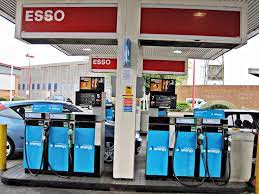It seems obvious. Into one car you simply put electrons, into the other car you pump as much as 50kg of fuel, which uses more resources?

Over the lifetime of an electric car, roughly 30kg of raw material will be used. A combustion engine car will use 17,000 litres of oil.
In terms of resources, a combustion engine car burns about 300 times as much material as that which is scrapped when the electric battery is thrown away.
Given the refining process, that means that for every fossil fuel car on the roads, it is likely to emit as much as 70 tons of carbon across its lifetime – an amount far higher than anything that you might be able to attribute to extra carbon emissions for making an electric car.
Indeed, importantly, the carbon cost of making the batteries is already taken account of, when calculating the carbon emissions of building the car. It seems that the sums are simple
- with a fossil fuel car, emit 5-10 tonnes less in manufacturing (this gap is narrowing, and with second life for the battery, it will only continue to reduce) but ensure that between your purchase and the scrapping of that combustion engine car, perhaps as much as 70 tonnes of extra emissions will be released.
- with an electric car, accept that your purchase will have a few extra tonnes of carbon attached. However, once you have purchased it your carbon emissions can be close to zero (there is an increasing number of green electricity promise tariffs where all your electricity comes from carbon zero sources.
For anyone with half a brain, the decision based on carbon emissions is clear. If you disagree, think about how you will explain your behaviour to your grandchildren – the cost that you added to, just so you can refill faster (it has been shown multiple times that journeys are rarely shorter, you just make sure that while you are enjoying a toilet break, food or stretching your legs, the car is recharging), or even worse ‘just because you like the purr of the engine’. This is something that I have never understood.
For those who support this sites mission – make it pay more to protect wildlife than to get rid of it, you will find this second point more important.
I am yet to do a lot of wildlife travel since I got my new car, however, I am already quite sure that I will see more wildlife. My approach in my electric car is so quiet that I am usually within sight of any wildlife before they are aware that I am coming.
If you are a hold-out who is determined to never go electric, do think about how you will explain that. Electric cars are expensive: largely because they are complicated to make and there are not enough for everyone. This also keeps used prices high. However this will change over time, and as we found – even though entry prices are higher, this is more than offset by low running costs.











